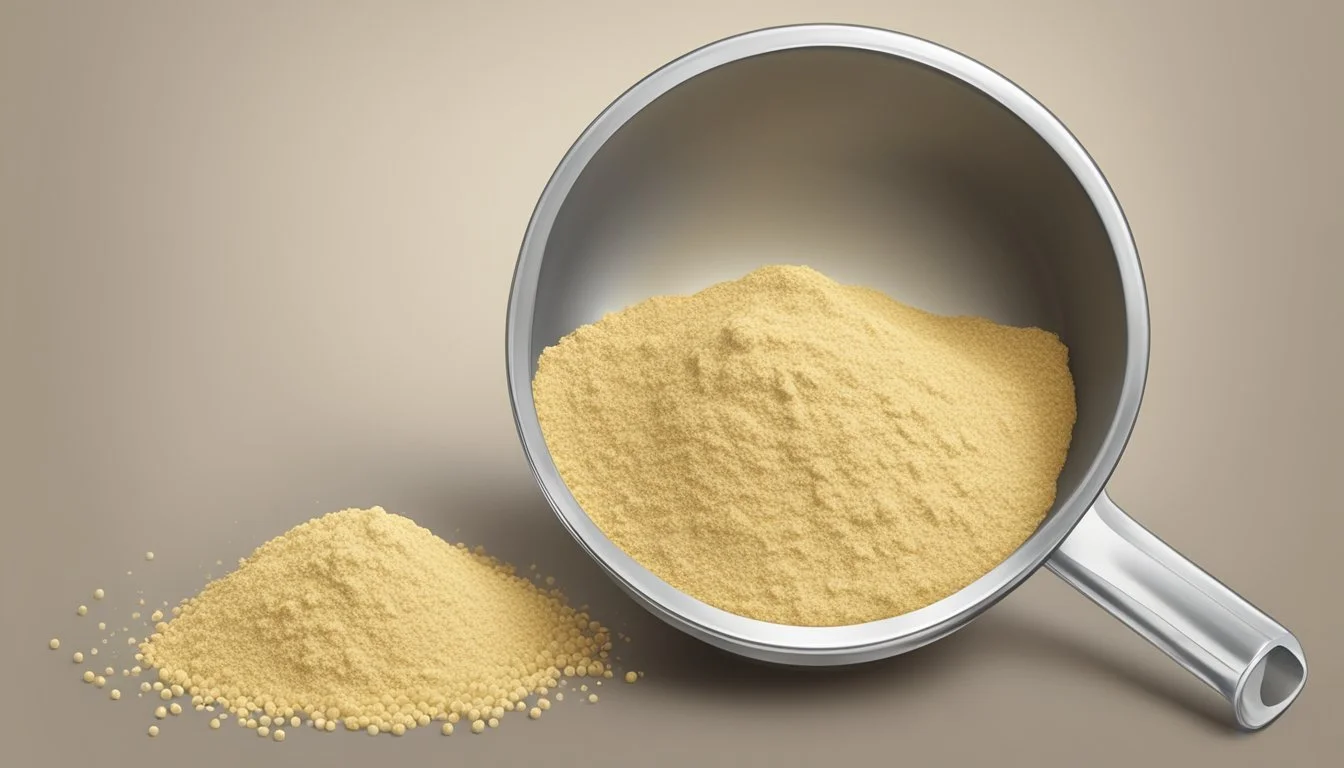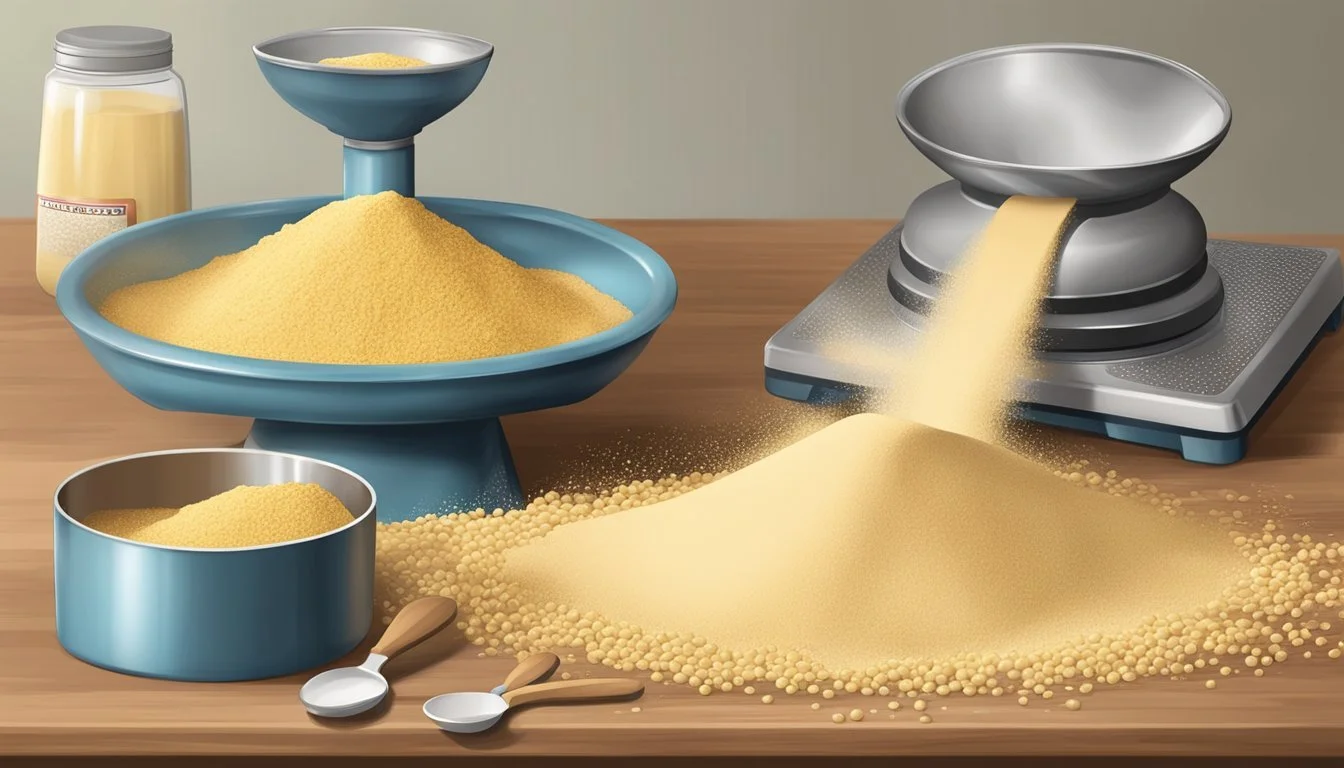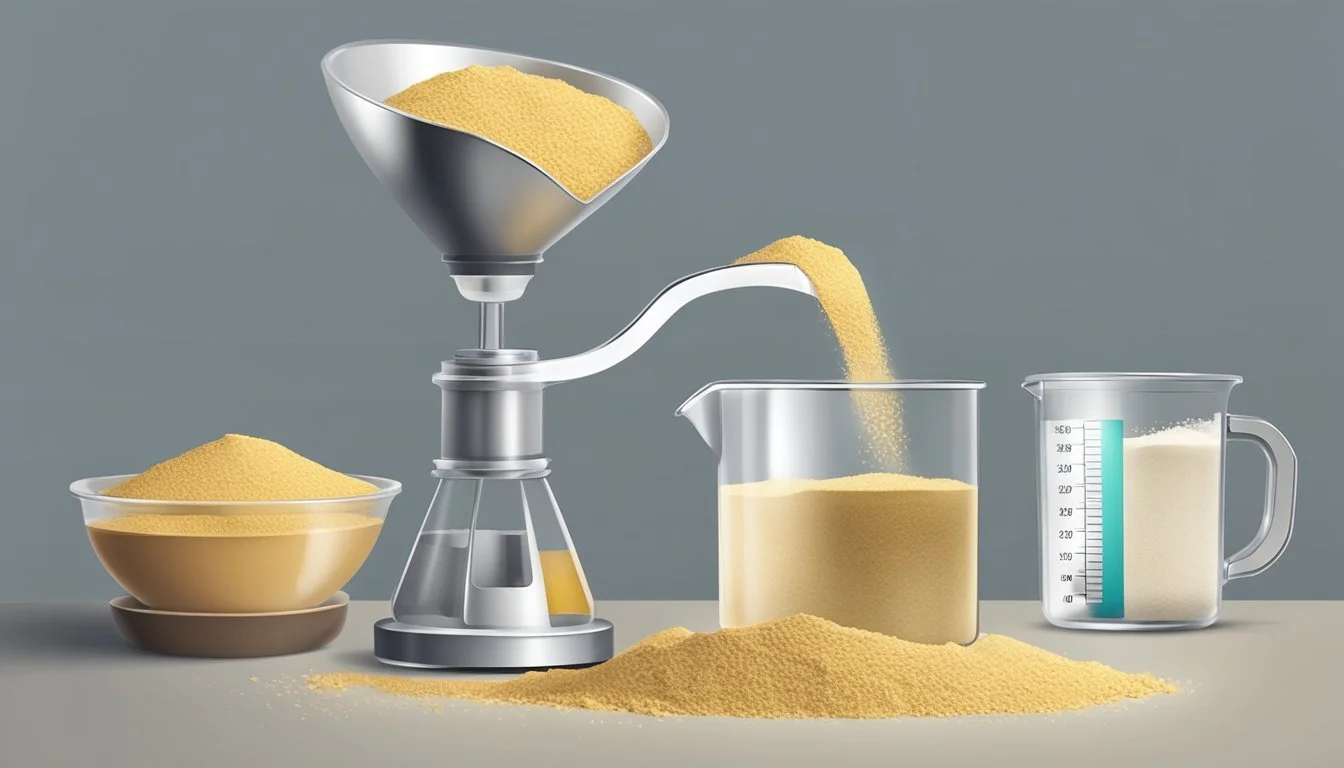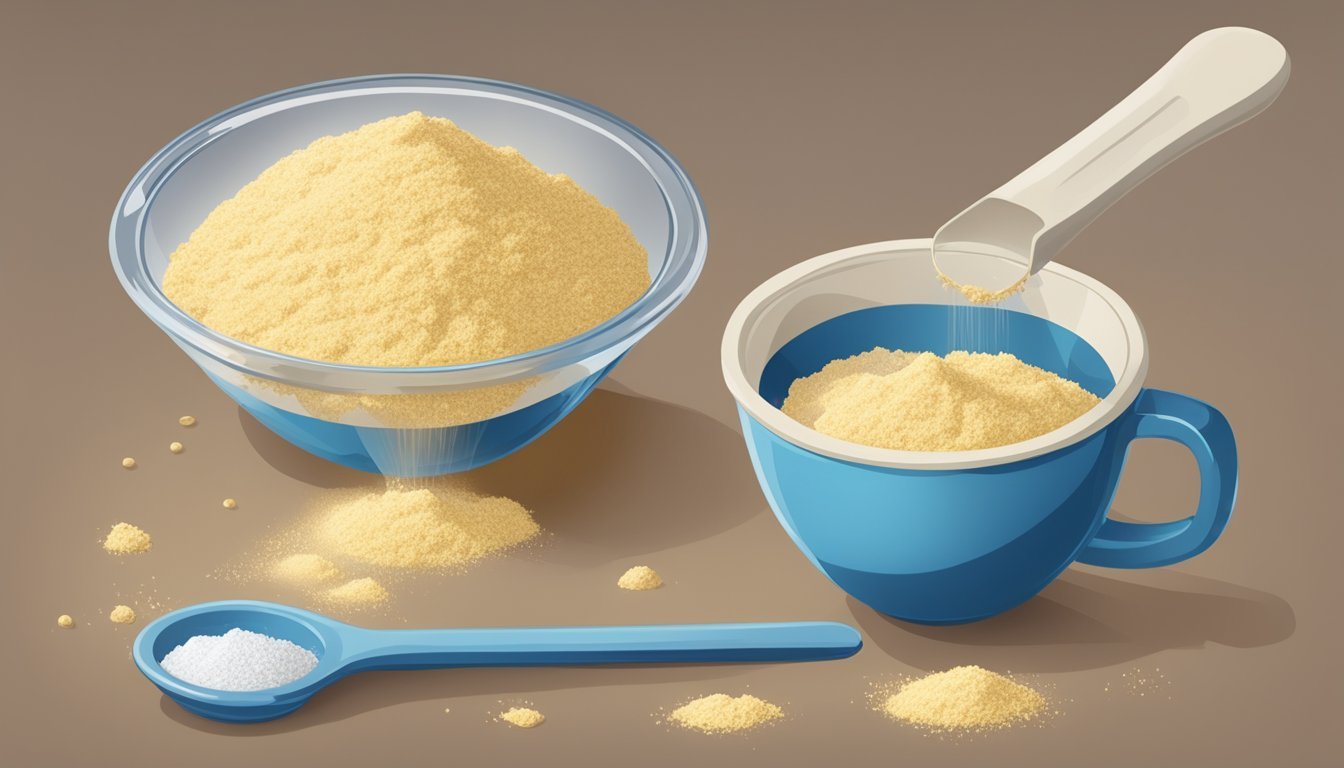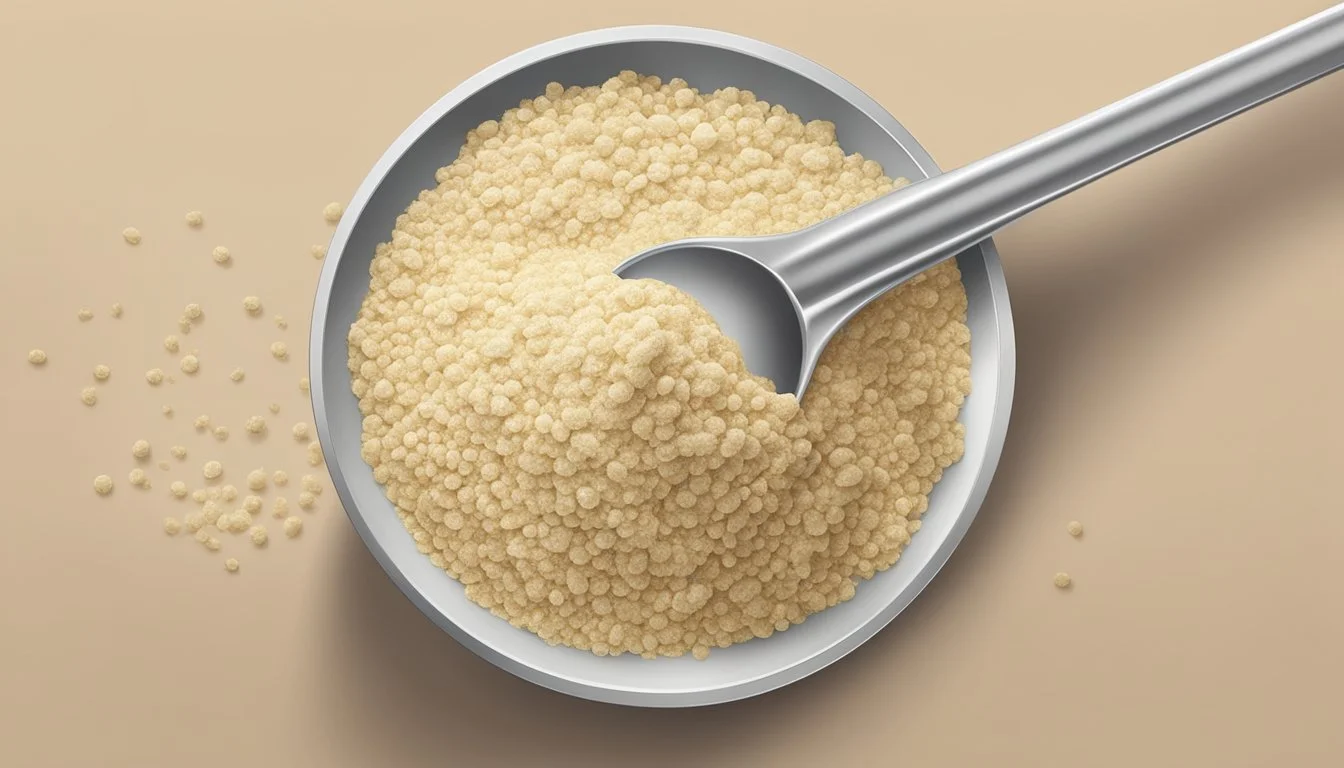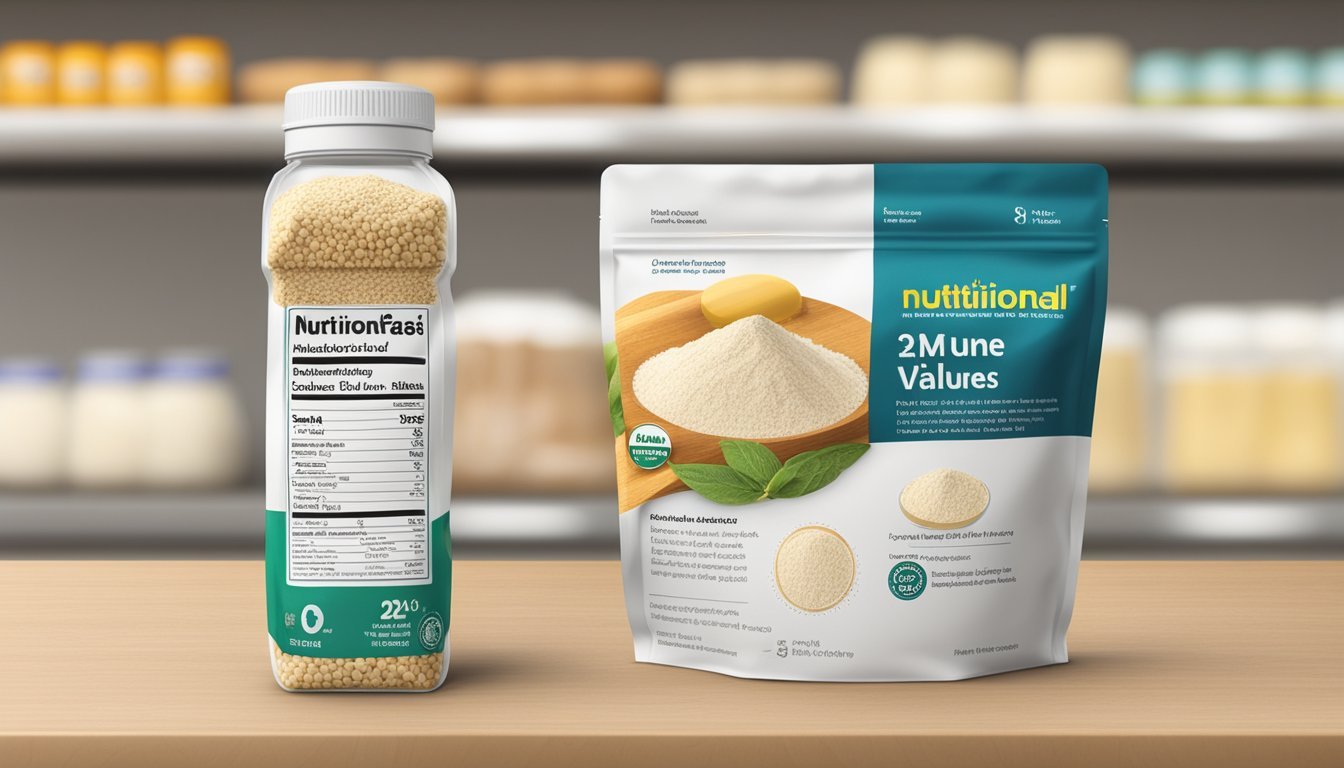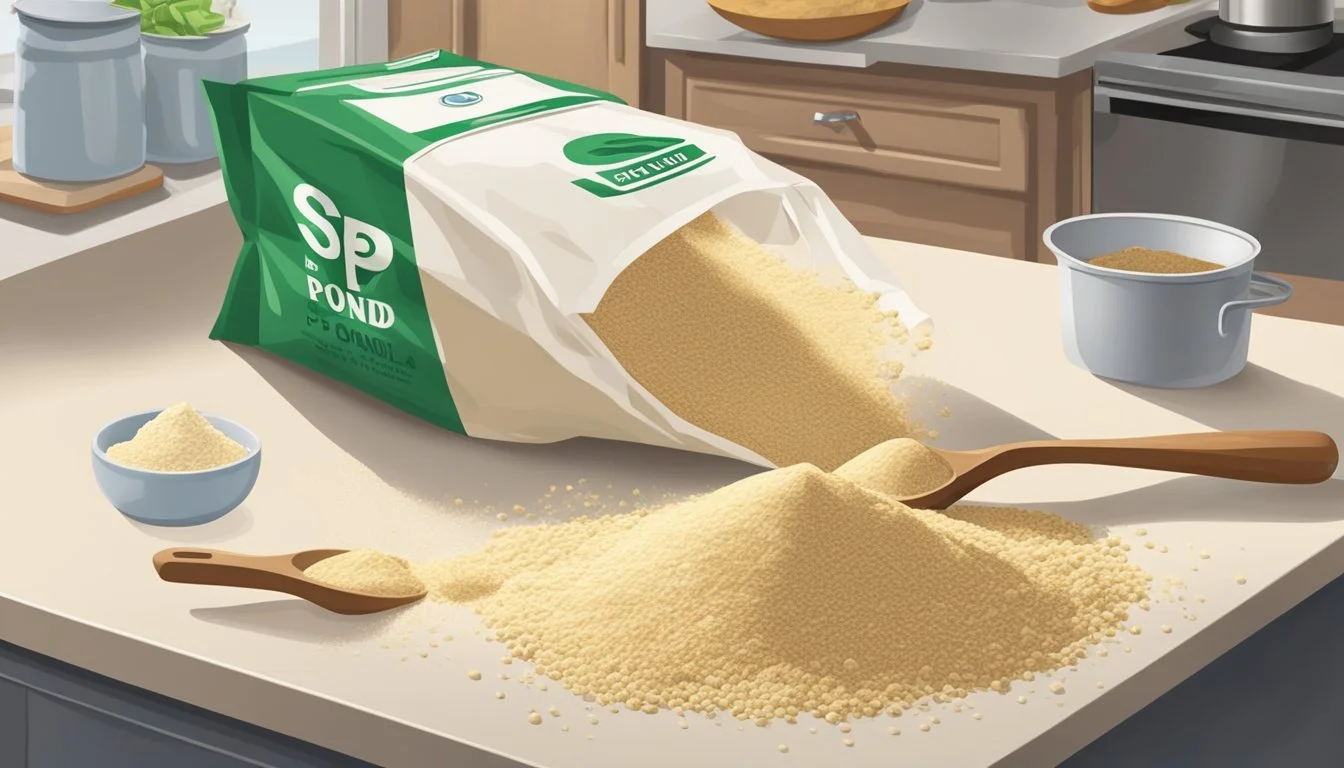How Many Tablespoons in a Pound of Soy Flour?
Understanding Measurements
When measuring ingredients for cooking and baking, precision is key. This is particularly true for dry ingredients, where volume and weight can differ significantly. For soy flour, a popular alternative to traditional wheat flour, understanding the conversion between weight and volume can help ensure recipe success. A pound of soy flour, a standard unit of weight in the United States, is equivalent to approximately 51 tablespoons. This measurement provides a convenient rule of thumb for culinary professionals and home cooks alike, simplifying the process of converting recipes or scaling ingredients.
The conversion rate between pounds and tablespoons of soy flour helps maintain the accuracy required for consistent baking results. Since soy flour is denser than other flours, a direct conversion from a wheat flour recipe may not yield the same outcome. Given that different flours have varying densities due to their unique protein and fiber content, using the correct equivalent of soy flour is essential. Comprehending these nuances enables individuals to adapt recipes from conventional flours to soy flour, accommodating dietary restrictions and exploring a broader range of culinary options.
Understanding Measurements in Cooking
When it comes to cooking, precise measurements are fundamental to ensuring accuracy and consistency in recipes. Conversion is a critical skill that allows one to interchange different measurement units such as volume, weight, and quantity. As an essential part of daily cooking tasks, understanding how to measure ingredients effectively can influence the success of a dish.
Weight and volume are two primary means of measuring ingredients. Weight is measured in units such as pounds, ounces, grams, and kilograms, and is often considered more accurate than volume measurements, which include cups, tablespoons, and milliliters. For example, one may need to know the equivalent of one pound of soy flour in tablespoons, which requires a conversion from weight to volume.
Here is a basic guideline for conversions which may vary slightly depending on the ingredient:
Volume Weight (common flour) 1 cup 120 - 125 grams 1 tbsp 7 - 8 grams
Given the approximate weight of one cup of flour is 120 to 125 grams, and one tablespoon is roughly equivalent to 7 to 8 grams, a pound of soy flour can then be estimated. It's essential to consider that different types of flour have varying densities, so this table serves as a general guide. For soy flour, the cook may need to account for its unique weight-to-volume ratio when converting.
Precise measurement of ingredients can prevent potential discrepancies in taste and texture, and is especially important in baking, where precision is key. Chefs and home cooks alike must pay careful attention to how they measure their ingredients to achieve consistent and desired results in their culinary creations.
Units of Weight and Volume
When measuring ingredients such as soy flour, one must understand the distinction between weight and volume as units of measure. A pound (lb) is a unit of mass commonly used in the US customary and imperial systems. To contrast, a tablespoon (tbsp) is a unit of volume.
Here are the basic conversions:
1 pound = 16 ounces (oz)
1 ounce = 28.35 grams (g)
1 kilogram (kg) = 2.20462 pounds
1 tablespoon = 3 teaspoons (tsp)
For dry ingredients, volume units like cups, tablespoons, and teaspoons are often used, which can vary based on the density of the substance. In contrast, fluid ounces are a volume unit for measuring liquids in the US customary system.
Converting between these units requires an understanding of the ingredient's density. Flour, being less dense than many other ingredients, has different conversion rates than denser materials. For instance, a pound of soy flour will have a different volume in tablespoons compared to a pound of a denser substance.
Below is a simplified reference table showcasing the relationship between some common units of weight and volume:
Unit of Mass Equivalent in Grams 1 pound (lb) approx. 453.59 grams (g) 1 ounce (oz) approx. 28.35 grams (g)
Volume Unit Mass Equivalent (Varies by Ingredient) 1 cup --- 1 tablespoon (tbsp) --- 1 teaspoon (tsp) ---
The precise volume in tablespoons for a pound of soy flour must consider the flour's density and the specific conversion factor for soy flour, which differs from conversions applicable to other types of flour or ingredients.
Soy Flour Specifics
Soy flour is a fine powder obtained from grinding roasted soybeans, which are pulsed into flour after having their hulls removed. This ingredient is primarily used as an alternative to traditional wheat flours in various culinary applications, offering a higher protein content and a lower carbohydrate level.
Density and Measurement: Being a dry ingredient, soy flour's density is crucial when converting weight to volume. Its density varies slightly depending on the grind and compaction, but on average, a pound of soy flour roughly translates to 51.1 US tablespoons.
Converting Flour in Pounds: When recipes call for dry ingredients like soy flour in pounds, cooks often require the equivalent in volume measurements like tablespoons. The standard conversion is based on the premise that:
1 pound of soy flour = Approx. 51 US tablespoons
Table of Nutritional Information:
Soy flour, per 1 pound
Nutrient Amount Calories Varies* Protein High Carbohydrates Low (compared to wheat flour) Fat Low (in low-fat variety)
*Calories can vary depending on whether the soy flour is defatted or full-fat.
Usage: Utilized for its nutritional power, soy flour can reduce the carbs in baked goods and increase the protein content. Its distinct taste and texture can alter the characteristics of baked items, resulting in denser, richer outcomes. Chefs and culinary educators often employ soy flour in a variety of dietary contexts, from gluten-free recipes to protein-enriched diets.
It's essential for any individual using soy flour to account for its unique properties, including its density and how it interacts with other ingredients, to ensure the success of their culinary endeavors.
Converting Pounds to Tablespoons
Converting pounds of soy flour to tablespoons requires knowing the specific density of soy flour. Understanding this conversion is crucial for accurate recipe measurements and culinary consistency.
Pounds of Soy Flour to US Tablespoons Chart
The conversion of pounds to tablespoons for soy flour can be represented in a chart for quick reference:
Pounds of Soy Flour US Tablespoons 0.1 lb 19.2 tbsp 0.2 lb 38.4 tbsp 0.3 lb 57.6 tbsp 0.4 lb 76.8 tbsp 0.5 lb 96 tbsp 1 lb 192 tbsp
Note: These conversions assume a general density for soy flour. The actual conversion rate may vary based on factors such as the grind size and any potential compaction of the flour.
FAQs on Soy Flour Volume to Weight Conversion
Q: What is the formula for converting pounds of soy flour to tablespoons? A: The formula to convert pounds to tablespoons is to multiply the weight in pounds by the number of tablespoons per pound. The exact number of tablespoons per pound can vary slightly depending on the specific density of the soy flour one is using, but a typical value might be 192 tablespoons per pound of soy flour.
Q: How accurate is the conversion from pounds to tablespoons? A: The conversion is generally accurate, but for high precision, one should consider the specific density of the soy flour and any potential compactness. It is important to sift the flour before measuring to ensure consistency.
Q: Is there a link to a conversion tool for soy flour measurements? A: While this article provides a conversion chart, specific online conversion tools exist that can assist in converting pounds to tablespoons for various ingredients, including soy flour. Users should search for a "pounds to tablespoons converter" and ensure it allows for ingredient-specific density inputs.
Using Conversion Tools
When converting a pound of soy flour into tablespoons for baking or cooking, a reliable kitchen scale or a conversion tool is essential. A standard kitchen scale measures the weight of ingredients, which can then be converted to volume measurements such as tablespoons with the aid of these tools.
Cooking and baking recipes often specify ingredients by weight or volume. For an accurate conversion from weight (pounds) to volume (tablespoons), one can use online calculators designed specifically for this purpose. These tools are particularly beneficial because soy flour has a density that differs from other flours, impacting the conversion rate.
Here's an example table illustrating conversions for soy flour from pounds to tablespoons:
Weight in Pounds (lb) Volume in Tablespoons (tbsp) 0.25 12.8 0.5 25.6 1 51.1 1.5 76.7
This table shows approximate conversions and should be used as a guideline. For exact measurements, it is best to refer to the specific conversion tools or applications that are available.
Users should ensure that the conversion tool compares with the type of tablespoon used (US or UK), as there is a slight difference between the two. With these tools, home chefs and culinary students can follow their chosen recipes precisely, leading to more consistent and successful results in their culinary endeavors.
Common Conversion Mistakes
When converting pounds of soy flour to tablespoons, errors can often occur. Clarity is crucial in avoiding these misconceptions.
Errors in Technique: A common mistake is measuring the flour by packing it into the tablespoon, leading to more soy flour per tablespoon than intended. Instead, the flour should be lightly scooped without compacting to ensure accuracy.
Assuming Uniform Density: Soy flour may vary in density due to different grinding processes or moisture content. Assuming it has the same density as other flours may result in inaccurate conversions.
Incorrect Assumption Correct Approach Using volume for weight Use weight for weight conversion One flour fits all Use specific density of soy flour
Ignoring Brands: Different brands may have slightly different weights per volume.
Always check if the brand provides specific conversion information.
Errors or Omissions in Tools: Using inaccurate or poorly calibrated measuring tools can introduce errors. Ensure measuring tools are standardized and flat edged for leveling off.
Disclaimer: Given the potential variability, the provided measurements are to be taken as approximate. They should not be used for precision-demanding purposes without verification.
Feedback Improvement: If users discover discrepancies or have suggestions for more accurate conversions, sharing feedback can help refine these measurements.
Avoiding Omissions: Ensure that no steps in the measuring process are overlooked. Each step, from selecting the correct tool to leveling the flour, is critical to the conversion's accuracy.
By staying alert for these common pitfalls and making precise, careful measurements, conversion mistakes can be mitigated, leading to more successful culinary outcomes.
Ingredient Alternatives
When a recipe calls for soy flour, chefs and home cooks might find themselves in need of an alternative due to dietary restrictions or availability. Though the properties of soy flour are unique, there are several substitutes one can confidently use in its place.
Nut Flours: Almond flour stands out as a common substitute for soy flour, especially for those needing a gluten-free option. Rich in nutrients, almond flour has a similar consistency but it can be more expensive.
Grain Flours: Quinoa flour is a suitable replacement, with its light texture and high protein content. It's grain-free and gluten-free, making it beneficial for a variety of dietary needs.
Others in the grain category include:
Wheat flour, for a more conventional cooking and baking option.
Rye flour, providing a distinctive taste.
Cake flour, offering a lighter texture for delicate bakes.
Starch: Potato starch serves as a thickening agent and can mimic some properties of soy flour, though mainly in texture, not in protein content.
For those not adhering to gluten-free constraints:
Bread flour can be used in yeast bread recipes.
Pastry flour is ideal for tender baked goods.
It's important to note that while these alternatives are useful, they may alter the final taste and texture of a dish. Chefs should adjust the amount used according to the substitute's characteristics.
In recipes where soy flour is used as a binding agent or for added protein, cooks might consider:
Chia seeds or poppy seeds in baking, for added texture and nutrients.
Each substitute will impart its own unique flavor and texture to the dish, so chefs should select based on the desired outcome of the recipe.
Adjusting Recipes for Soy Flour
When utilizing soy flour in recipes, precision is crucial. Soy flour is denser than all-purpose flour and contains higher protein and fat, making it a valuable ingredient for gluten-free or nutrient-dense baked goods. However, due to its unique characteristics, certain adjustments are necessary for successful incorporation into recipes.
Measurement Conversion:
To convert the amount of soy flour needed when substituting for all-purpose flour, one should use the following guide. For every pound of all-purpose flour, approximately 3.5 cups of soy flour are used.
All-purpose Flour Soy Flour 1 pound 3.5 cups
Liquid Adjustment:
Soy flour requires more liquid than other flours due to its higher absorption rate. Therefore, for each cup of soy flour used, an additional 2–3 tablespoons of water or milk should be included to maintain proper moisture levels in the recipe.
Binding Agents:
Inclusion of nuts and seeds can provide additional binding to counterbalance the lack of gluten in soy flour, which is especially useful in cookies and quick breads.
Leavening Agents:
The protein content in soy flour can affect the rise of the dough. It may be beneficial to increase the quantity of baking powder or baking soda slightly to achieve the desired leavening.
Salt:
The addition of salt may be reduced slightly as the flavors are intensified with the use of soy flour in comparison to all-purpose flour.
Adjusting recipes for soy flour takes careful consideration, but following these guidelines will help ensure that the resulting dish retains its desired texture and taste.
Expert Tips for Accurate Measurements
To ensure accuracy in cooking and baking, especially when working with ingredients like soy flour, chefs and bakers need to rely on precise measurements. The correct amount of an ingredient can be the difference between a culinary success and a kitchen mishap. This is particularly true for soy flour, where density and consistency can significantly influence results.
When converting from pounds to tablespoons, it's essential to note that the volume of soy flour may vary. A general guideline is that one pound of soy flour can be approximately equivalent to 45 to 50 tablespoons.
Here are some expert tips:
Use a Scale: For best results, they should measure soy flour by weight. A kitchen scale guarantees accuracy, crucial for professional bakers and chefs.
Level Measurements: After scooping soy flour into a tablespoon, they should level it off with a straight-edged utensil. Excess flour can alter the outcome of the recipe.
Sift Flour: Prior to measuring, they should sift the soy flour. This process aerates it, leads to more accurate volume measurements, and can prevent the recipe from becoming too dense.
Measurement Soy Flour Equivalent 1 pound ~45-50 tablespoons 1 tablespoon (leveled) ~0.35 ounces
Accuracy is paramount. For sweetness in baked goods, sugar is commonly used, but unlike sugar which has more consistent grain size, soy flour's density can result in varying measurements. They should not substitute soy flour directly for all-purpose flour due to disparities in absorption and binding properties.
By applying these tips, the chef or baker maintains control over their recipe's outcome, ensuring consistent, delicious results with every bake.
Nutritional Values in Soy Flour
Soy flour is a rich source of nutrients, offering a robust profile that includes protein, fats, and carbohydrates. The nutritional values vary depending on whether the soy flour is full-fat or defatted. A tablespoon of full-fat soy flour typically contains around 23 calories, with a distribution of 40% fat, 30% carbohydrates, and 30% protein.
For those tracking their intake, the calorie content can contribute to daily dietary needs. A single cup of stirred full-fat soy flour (approximately 88 grams) holds about 366 calories, with a notable 330 calories coming from the same quantity of its low-fat counterpart. The fat content in low-fat soy flour is significantly lower, making it a preferred option for individuals managing their fat consumption.
Table of Soy Flour Nutritional Values (per 1 tbsp)
Nutrient Full Fat Soy Flour Defatted Soy Flour Calories 23 Varies Fat 40% of calories Reduced Carbs 30% of calories 30% of calories (Approx.) Protein 30% of calories 30% of calories (Approx.)
It's important to note that these values can assist in food conversion tasks, such as determining the amount needed to meet certain dietary requirements.
When converting wet to dry ingredients, or vice versa, the density of soy flour should be taken into account. Soy flour is denser than all-purpose flour, so when substituting in recipes, one may need to adjust the volume used to achieve the desired result.
In terms of food conversion, knowing the nutritional values of soy flour helps calculate the substitution ratios when replacing other flours in recipes. This is essential in making dietary adjustments or when cooking for specific nutritional needs.
Additional Resources
This section provides curated resources for readers looking to deepen their understanding of measurement conversions in cooking and baking. They will find focused information within these supplement resources, helping ensure accuracy in ingredient usage.
FAQs on Ingredient Measurement
For commonly asked questions about how to measure ingredients accurately, readers can refer to various FAQ sections on culinary websites. These resources are beneficial for quick reference and troubleshooting common measurement issues.
Common Questions: Addressed concerns include the equivalence of weight to volume and the impact of ingredient consistency on measurement.
Expert Insights: Professional chefs and bakers often contribute their knowledge, offering tips for precise measurements.
Food Conversion Articles
Informative articles on food conversion can offer clarity on how different ingredients translate between weight and volume. These articles are particularly useful for:
Complex Conversions: Understanding how to convert between different measurement systems, such as metric to imperial.
Ingredient-Specific Guides: Detailed explanations on how the density of various ingredients affects conversion ratios.
Key Entities:
Readers are encouraged to access conversion charts, which are often available in tabular form, providing a visual representation of conversion data.
Articles on food conversion are typically backed by references to scientific research or culinary standards, which is reflected in the neutral and informative tone of the content.

